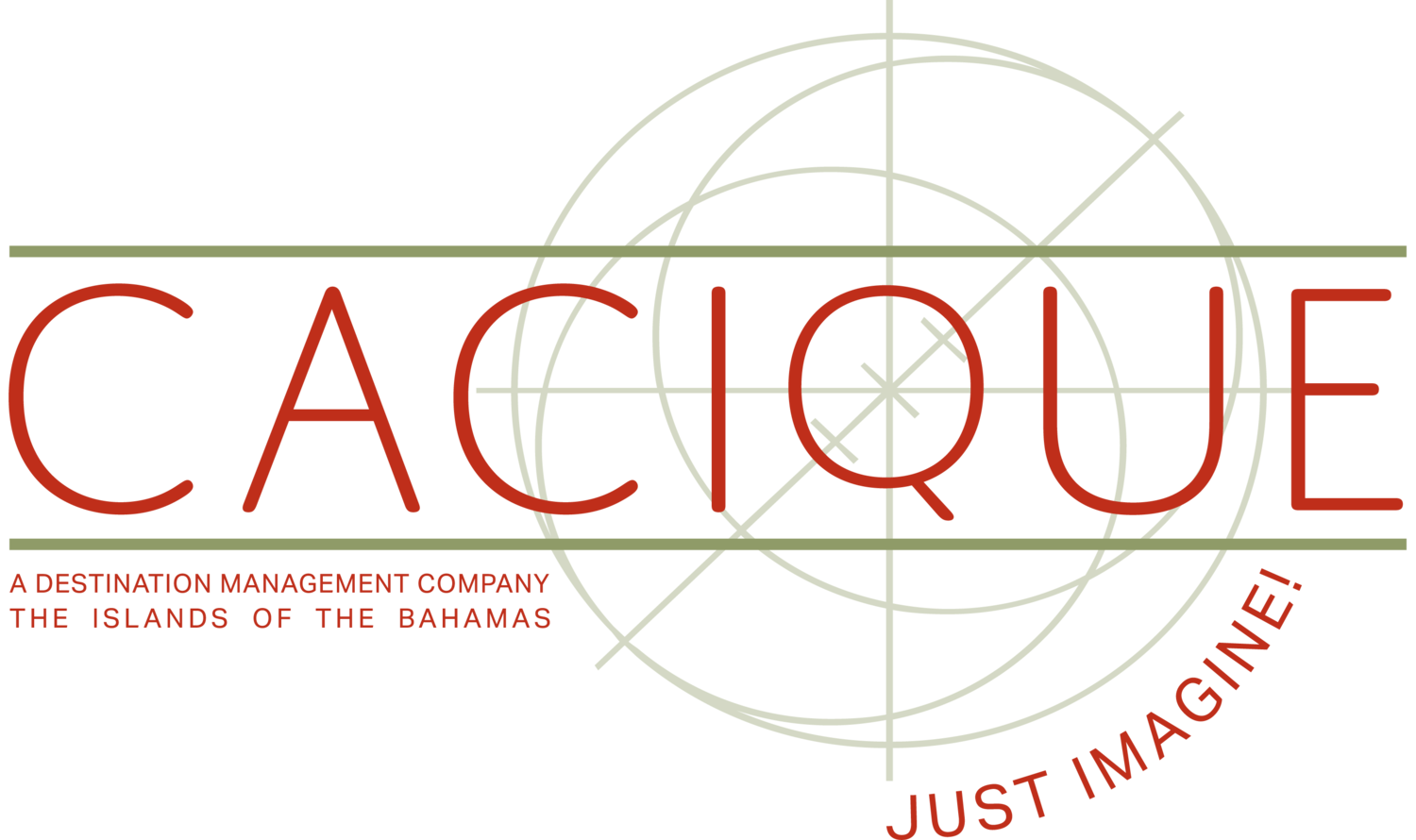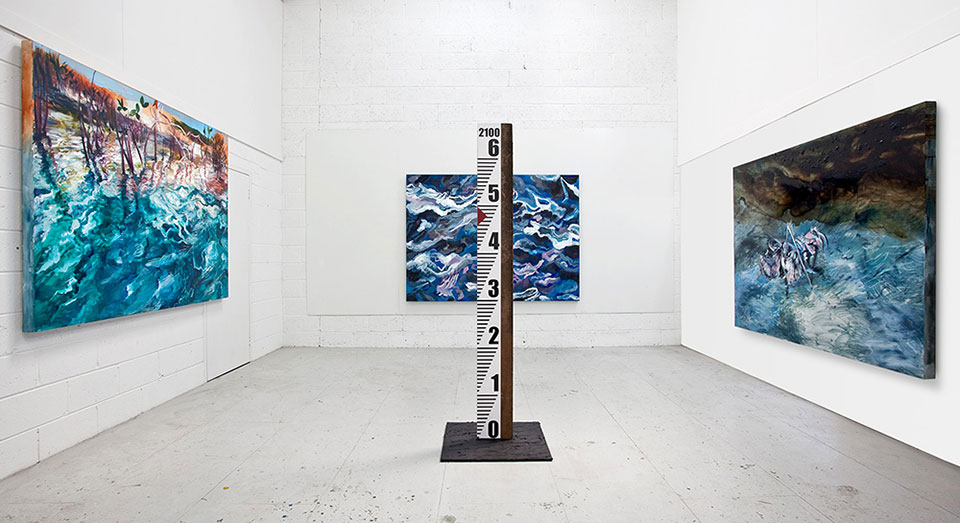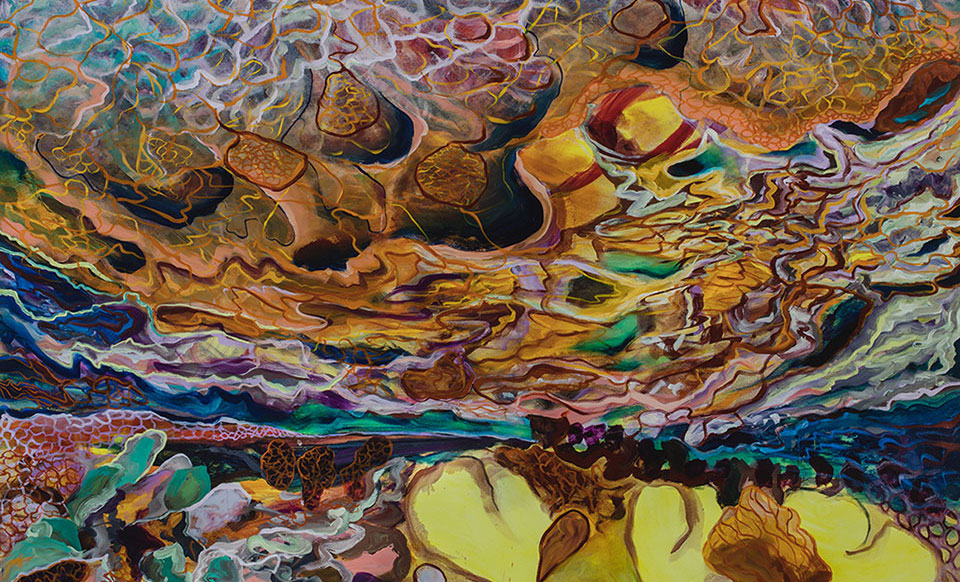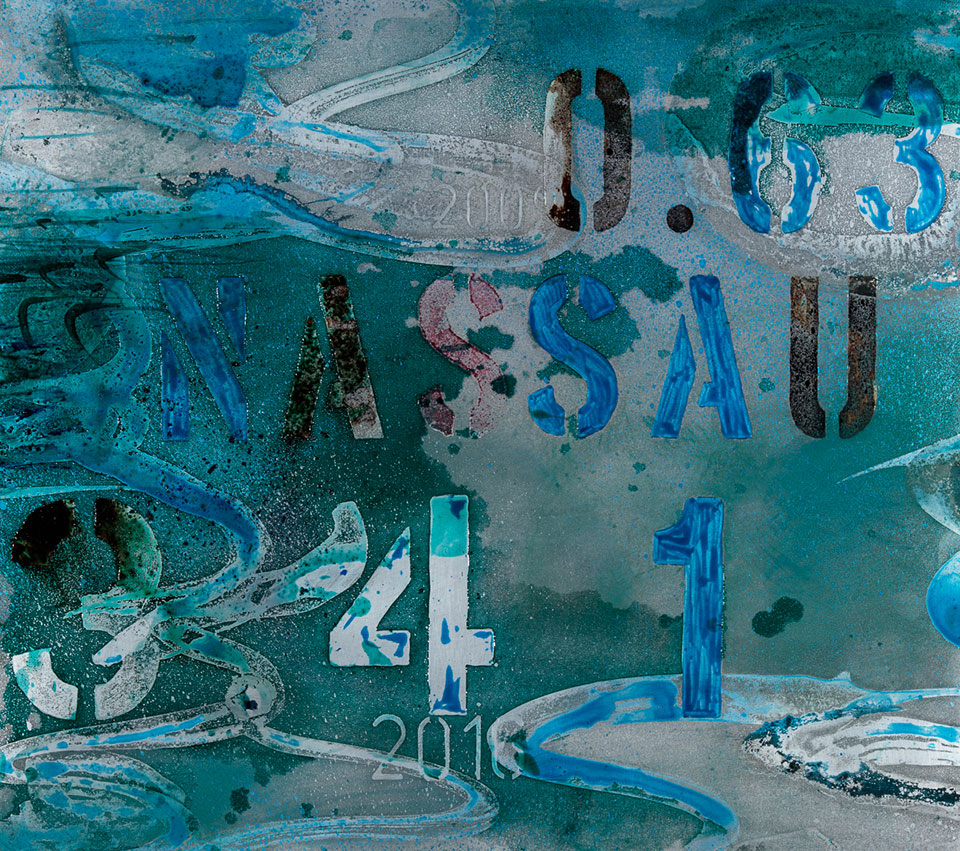ARTIST IN THE SPOTLIGHT: Lynn Parotti
“The business of art is to reveal the relation between man and his environment.”
Welcome to Cacique’s Artist In The Spotlight series - a journey into a thriving Bahamian art scene and a look at some of our most exciting artists, pushing boundaries on island and around the world. In this episode, we get to spend some quality studio time with the inimitable Lynn Parotti, a London-based Bahamian artist whom, in the wise words of the formidable D.H Lawrence above, is truly in the business of art - her visceral oil paintings exploring the intersection of the natural environment and the human experience.
It was hard prying Lynn away from her beloved tools to take this shot, but we managed to make it happen.
Cacique. What are you currently working on?
Lynn. Paintings of longing and travel. I’m in the middle of an exciting commission of Courchevel 1850 in Les Trois Vallées of the French Alps. It is a large canvas featuring an idyllic summertime scene in this glorious landscape at sundown. Also a Bahamian, my wonderful buyer requested a non-snow scene in the same vain of an early painting she had seen - MacGillycuddy’s Reeks, County Kerry, Ireland which had been purchased by Mr. Vincent D’Aguilar’s from me back in 2005. She also wanted colour, and mist, so I have featured a low lying cloud gently moving its way through the mountain valley, embracing the pine woods. I have sneaked in a rather hopeful turquoise lake to remind her of home.
During Dusk, Courchevel, oil on canvas, 120x200 cm.
As a result of other recent travels, I have primed smaller canvases with the initial washes ready to develop the images of canyons in the USA and then the collision of landscape that Iceland has to offer. There may be some linkage to the underwater caverns I have featured in the past. Some of my work borders on realism and abstraction and at the moment I’m thinking the new work will be more undecipherable.
From the installation Tar Baby: Mangrovia, Surge & Plume with Water Level Marker, Oil & Bitumen on Canvas & Mixed Media, each 165x230cm.
C. Describe your creative process from head to canvas
L. I go out into the field to collect data - numerous photographs, notes and personal experience of the land or seascape. I cannot paint about a situation or environment unless I have experienced it first hand. This includes the coral reef, on the ski slope, on the glacier, near the geyser or down the canyon. My partner John and I work very hard at getting into the landscape, which can be unpleasant at times. My first ever intentional visit to an environment specifically for work was in 2007 when we visited Great Inagua. I still refer to those pictures and themes ten years on.
Eventually, I return to my studio and the painting process begins after selection and often combination of images on my computer. At some point I stop looking at the imagery and let the painting dictate the next moves to its resolution.
From Black Dahlias, 200x222 cm. Photo Angelo Plantamura
For Poseidon, oil on canvas, 200x222 cm. Photo Angelo Plantamura
C. How does the changing socio-economic climate of the world affect your art?
L. More recently than ever, if you have a conscience, television, phone and are aware of the news it is unavoidable to escape the socio-economic climate. One would truly have to live in a bubble not to think about this issue which also affects other issues like the affects of global warming on the environment. A knock on affect with everything connected and often cost determining legislation choice and even attitude. Consider Trump’s pull-out of the Paris Agreement on climate change.
I have made paintings and installations dealing with migration, differentiation and financial imbalance, including The Space Between Want, Safety Zones, Slave House, and Hotspots often using comparisons to highlight the complexity of the issue. In Safety Zones, the state of the historical Haitian Migrant crisis was juxtaposed with reflections of West India Docks, former delivery port for the fruits of slavery, now the financial district of Canary Wharf, big banks, London. All this went down just before the subprime mortgage crisis and credit crunch of 2008.
In 2016 I painted a large scale water painting featuring a capsized small wooden vessel, called “To Cross This Sea Was Not in My Plan.” Our referendum on Brexit followed shortly, giving this work further resonance as migration has become hot topic fuelling fear, hatred and near political lunacy both here in the UK and in the USA- everywhere.
Tar Baby was an installation of 2010 which dealt with sea level rise with reference to the Deepwater Horizon Oil Spill; and more recently My Territory and Atoll looked at the health of the reef and coral bleaching- the sensitivity of the polyps whom establish coral reefs and the effects of sea temperature rise.
Further, I looked at the municipal cost of clean water supply in Thirst I (2009) and Thirst II (2016) as 16 global cities were compared. Water cost becoming increasingly political with supply threatened and means sold creating big business.
Bridge, Oil on canvas, 165 x 230cm. Photo Angelo Plantamura
Diversification, oil on canvas, 65x80 cm. Photo Angelo Plantamura
“Within the last year Parotti has elaborated to include economic dislocation, migration and the movement of peoples, whether by force (as in our legacy) or desperate survival necessity (as in contemporary plights). The concept of ‘dwelling’ or ‘where we live’ has been at the forefront of her mind particularly due to recent political rhetoric and now, reality.”
C. How do you marry the physical and psychological realms in your work?
L. Every iota of detail in the final presentation of the finished work is relevant to me. Whether it’s that visible drip, or the final sheen of the surface of the paint, whether the image is recognizable, or just on the edge of abstraction or whether the balance of the work has been achieved. One cannot control the psychological readings and interpretations of the work as the viewer brings their own experience, but one can provide clues and pump as much emotion into the work so that intended communication is achieved.
Haitian Migrant Worker, Cleaning his Flip-flops, Inagua, The Bahamas, Oil on canvas, 165 x 230cm. Photo Angelo Plantamura
C. How would you describe the meaning behind your work to someone seeing it for the first time?
L. This truly depends on what series they are looking at as I touch upon many different topics and meanings. At times the message is more embedded than others.
MacGilly Cuddy's Reeks, oil on canvas, 130x214cm. Photo Angelo Plantamura
My Territory, oil on canvas, 165x230 cm. Photo Angelo Plantamura
C. What are your favorite hobbies away from art?
L. Gardening, swimming and walking my beloved dogs Titus and Bacchus. I also love cooking, drinking champagne and talking nonsense. My motto is "If you’re not enjoying it, STOP and go home." I love dancing, but can’t really, and I am not phased by this shortfall.
I labour at my roof terrace garden all year round just to revel in those days of sunshine and nights with my friends and dinner parties. I had a bereavement a while back which instantly taught me the value of each day. I have been told that I try to pack too much in.
Mangrovia Rosa, oil on canvas, 107x168 cm. Photo Angelo Plantamura
C. Do you have a favorite art tool you just can’t live without?
To Cross This Sea Was Not My Plan, oil on canvas, 165x230 cm. Photo Angelo Plantamura
L. I’m a stickler for the right brush for the job, otherwise I get frustrated when the paint doesn't move as intended. I love the viscosity of fresh, juicy oil paint with the correct ratio of medium and when it’s working properly, I feel elated. I use the highest quality of oil paint available. On this point I love my tube squeezer which permits me to get my money’s worth and my canvas pliers are pretty crucial too. I once realised they were still in my handbag whilst in the security queue of Miami airport after having already checked my luggage which made me very discombobulated.
C. What direction is the Bahamian art scene taking? Any notable Bahamian artist, besides yourself, to look out for?
L. Depends on what you’re looking for. If you want lyricism, tongue in cheek female longing, narrative-emotion, go and check out June Collie. If you’d like esoteric, thought provoking sculpture and interesting usage of material and spatial layering, unpredictable painting check out Tessa Whitehead. If you’d like important social commentary and change check out Kishan Munroe. I think you get the picture. We Bahamians are a very eclectic, mash-up of many cultures and varying attitudes and this is reflected in the art that’s coming out of the Bahamas at present and even more so out of the Caribbean at large. I was blown away by the standard of art in Relational Undercurrents, Pacific Standard Time LA/LA currently on show at the Museum of Latin American Art in Long Beach California and then due to tour the US. Kishan and my work is amongst that of 80 artists shown and it’s getting very good reviews.
Thirst II, composite, 165x190 cm. Photo Angelo Plantamura
Thirst II, 40x45 cm. Photo Angelo Plantamura
C. They say home is where the heart is. Which country has your heart?
I have been living abroad since I was 16 for a multitude of reasons, but the Bahamas will always be my home, most visibly demonstrated when I go to Exuma and reconnect with the ocean. I am not a spiritual person but the nearest to transcendence I’ve experienced in when I’m in the sea.
C. So...Sky Juice or Pimms Cup? :)
L. Puligny-Montrachet or Billecart-Salmon as gin makes me regretful and Pimms is far too sweet!
Safety Zones, West India Docks, oil on canvas. Photo Angelo Plantamura
DISCOVER CACIQUE | ART EXPERIENCES
It was wonderful playing catch-up with the amazing Lynn Parotti. Her passion for the natural environment and singular expression of our relationship with our planet is both inspiring in its voice and breathtaking on the canvas. For more information on Lynn Parotti, visit www.parotti.com or to arrange a Bahamian art experience, feel free to contact us.
Looking forward to the next chat! SS:)















